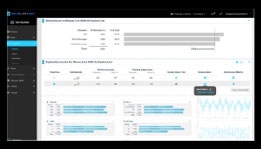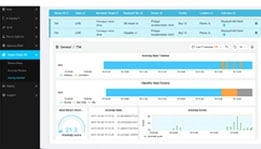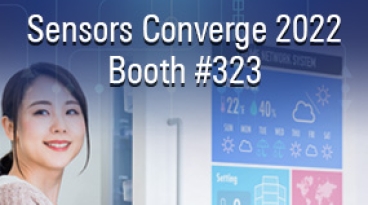
Reality AI Software for Real Time Analytics on MCUs & MPUs
Real-Time Analytics and Non-Visual Sensing
Edge AI and TinyML have paved the way for enterprises to build smart product features that use machine learning running on highly constrained edge nodes.
Reality AI is an Edge AI software development environment that combines advanced signal processing, machine learning, and anomaly detection on every MCU/MPU Renesas core. The software is underpinned by the proprietary Reality AI ML algorithm that delivers accurate and fully explainable results supporting diverse applications. These include equipment monitoring, predictive maintenance, and sensing user behavior as well as the surrounding environment – enabling these features to be added to products with minimal impact to the BoM.
Reality AI software running on Renesas processors will help you deliver endpoint intelligence in your product offering and support your solutions across all markets.
Technical Advantages
Full Integration with Renesas Toolchain
The Reality AI software comes with integration to Renesas e2studio, plus support for all Renesas cores and MCU dev boards. Integration with Renesas Motor Control kits is available as an add-on option.
Speed and Accuracy, with a Small Footprint
Unlike approaches that use quantization, compression, pruning or other machine learning techniques that make models small but erode accuracy, Reality AI combines advanced signal processing methods with machine learning that deliver full accuracy in a tiny footprint without compromises.
Transparency and Explainability
No engineer will deploy a solution they don't understand, so Reality AI offers transparency into model function based on time and frequency, as well as full source code available in C or MATLAB. You can always explain to colleagues and stakeholders why models perform as they do, and why they should be trusted.
Cost Optimization
Instrumentation and data collection are >80% of the cost of most machine learning projects, and Reality AI has analytics that can help reduce the cost of both. Reality AI Tools® can identify the most cost-effective combinations of sensor channels, find the best sensor locations, and generate minimum component specifications. It can also help you manage the cost of data collection by finding instrumentation and data processing problems as data is gathered.
Featured Products
Automotive Sound Recognition (SWS)
RealityCheck™ HVAC Solutions Suite
RealityCheck™ Motor Toolbox
Documentation
|
|
|
|
|---|---|---|
| Type | Title | Date |
| Flyer | PDF 679 KB | |
| White Paper | PDF 655 KB | |
| White Paper | PDF 875 KB 日本語 | |
| White Paper | PDF 717 KB | |
| Product Brief | PDF 416 KB | |
| White Paper | PDF 628 KB 日本語 , 简体中文 | |
| Flyer | PDF 284 KB | |
| Product Brief | PDF 560 KB | |
8 items
|
||
Videos & Training
See how Reality AI software from Renesas detects operating anomalies without sensors using predictive maintenance in firmware on the MCK-RA8T1 motor control development kit. This demo combines two kinds of AI models in a single project, one generated by Reality AI Tools and one ported using Renesas e-AI.
Events & Webinars
News & Blog Posts
| Blog Post | Mar 13, 2024 | ||
| News | Sep 21, 2023 | ||
| Blog Post | Jul 24, 2023 | ||
| Renesas Picks Its Battle on Edge AI | News | Jul 5, 2023 | |
| Blog Post | Jun 29, 2023 | ||
| News | Jun 15, 2023 | ||
| Blog Post | Mar 29, 2023 | ||
| Blog Post | Aug 31, 2022 | ||
| Blog Post | Aug 30, 2022 | ||
| Blog Post | Aug 29, 2022 | ||
| Blog Post | Aug 26, 2022 | ||
| Blog Post | Aug 25, 2022 | ||
| Blog Post | Aug 17, 2022 | ||
| Blog Post | Aug 17, 2022 | ||
| Blog Post | Aug 17, 2022 | ||
| Blog Post | Aug 16, 2022 | ||
| Blog Post | Aug 16, 2022 | ||
| Blog Post | Aug 16, 2022 | ||
| Blog Post | Aug 16, 2022 | ||
| Blog Post | Aug 15, 2022 | ||
| Blog Post | Aug 12, 2022 | ||
| Blog Post | Aug 12, 2022 | ||
| Blog Post | Aug 12, 2022 | ||
| Blog Post | Aug 11, 2022 |



























